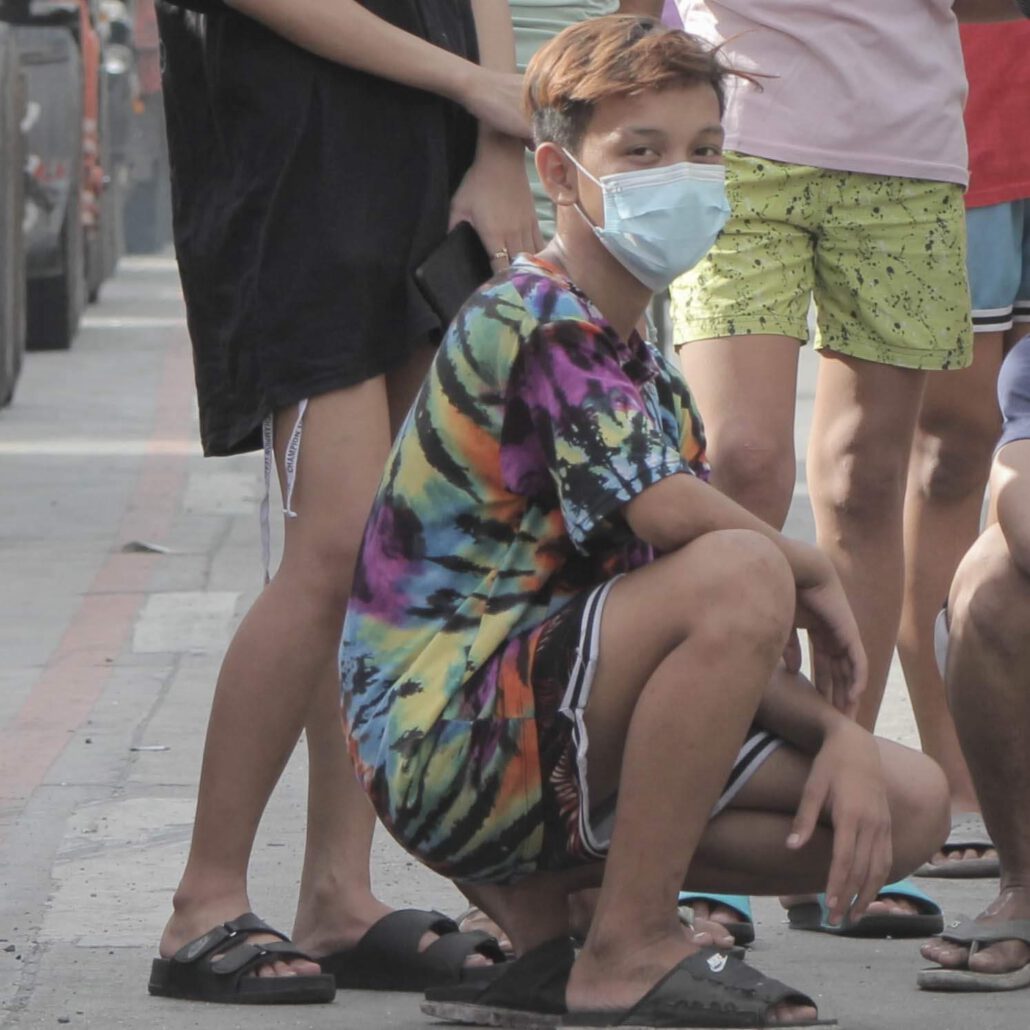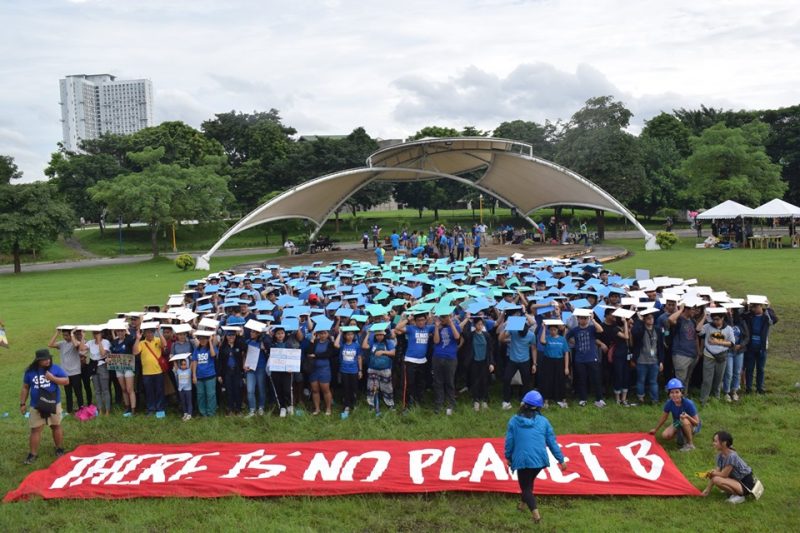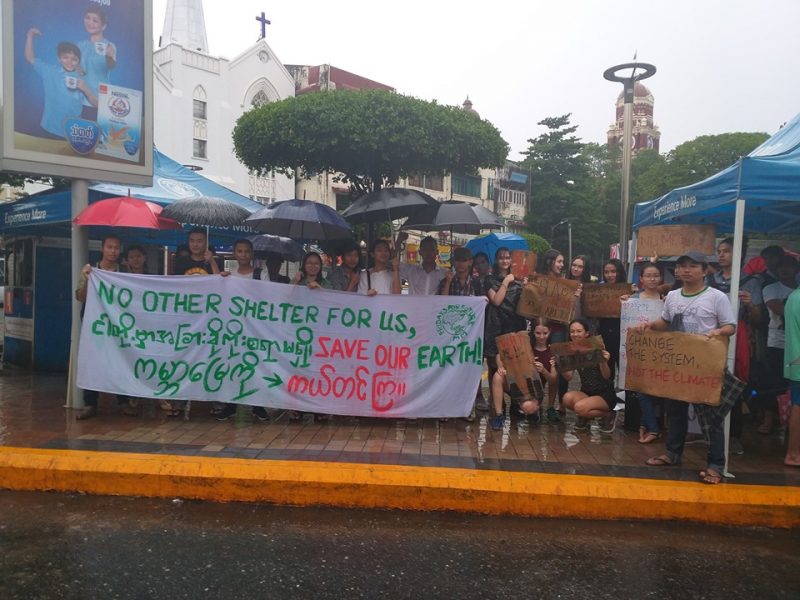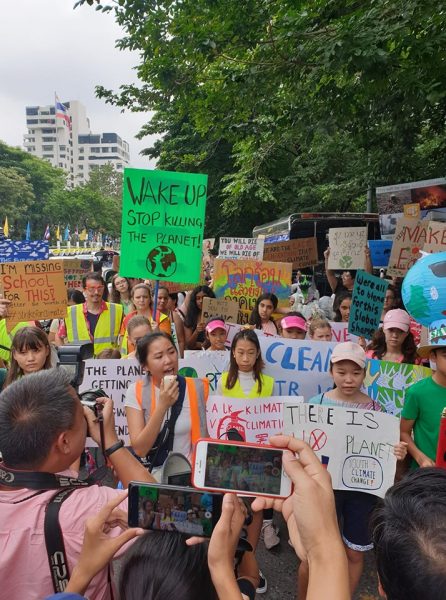By L.S. Mendizabal
June 2006—It was my freshman year at UP Los Baños. Students would scurry to and from their classes in random buildings scattered all over the campus at the foot of Mt. Makiling. They walked briskly by flyers posted on a few trees, utility poles and many a wall at jeepney stops and outside classrooms next to professors’ announcements. They were flyers of Karen Empeño and Sherlyn Cadapan, also UP students, who were abducted that same month. I remember giving them a quick glance: young girls’ faces—probably as young as I was—in black and white Xerox ink, under which the words were in striking capital letters, “MISSING” and “SURFACE!” I remember not reading the rest of the text. I was worried about the time, about how my next professor sent late students home. At the back of my mind, though, I thought, “Why are they missing? Must be why they want to bring soldiers in here.” During that time, certain members of the faculty, including a reserve colonel who’d eventually become Office of Student Affairs (OSA) Director, were pushing for the placement of personnel from the Armed Forces of the Philippines (AFP) within university grounds. Little did I know that it was the military that took Empeño and Cadapan, never to be seen and found to this day.
Unlike my high school batchmates who applied for the university residence halls, Mama sent me to a nuns’ ladies’ dormitory. We were practically monastics, too, without the veils. In fact, that’s what other people called us upon knowing where we stayed: “mga madre.” Some would take the joke further and call us “virgins.” I couldn’t blame them: we had a strict 9 p.m. curfew and by that, I mean all the cool college happenings happened afterwards. If you arrived so much as only ten minutes past curfew, the Mother Superior was already on the phone with your parents, telling on you. We had our meals cooked for us three times a day at a refectory except Sunday, which was when we felt absolutely free. My dormmates and I would do all sorts of things on this particular “free day.” We spoiled ouselves with P10-siomai (with rice!) and P15-ice cream outside (outside!) the campus, we spent hours in the internet shop, followed the dirt road to where all the cattle were, drank fresh carabao’s milk, went out with guys we were dating (secretly, of course), ran enthusiastically in the thunderstorm courtesy of Reming. On Sundays, we were free. Unstoppable. Just as long as we were home by nine o’clock and steered clear of the lovers’ common spot by the Fertility Tree (or any activity anywhere near your fertility, really) because Mother Superior would most certainly expel a resident student who suddenly got knocked up. There was also the “Neverending Bridge” which is actually Palma bridge. It earned its nickname from an old tale about a student who crossed it at midnight but never seemed to reach its end until he took his shirt off and wore it inside out. It might sound stupid but it was the kind of stupid myth any freshman would willingly believe just for the fun of it. Besides, what business could you possibly have on that bridge at an ungodly hour? Some would say that murderers disposed of their dead victims by throwing the bodies off the bridge, which was why it was haunted. One such restless soul belonged to a female student who was raped and killed in the 90s. This was, by far, the most hair-raising story, because it was no urban legend. While it isn’t true that her body was dumped under the Neverending Bridge, a female UP student was indeed abducted in 1993, gangraped and shot in the face by then Calauan Mayor Antonio Sanchez. Her friend who was with her at the time of her abduction was taken with her “to avoid complications.” He, too, was beaten and shot to death. Sanchez was given seven life sentences behind bars to pay for these crimes.
For UPLB students during my time, what happened to Eileen Sarmento and Allan Gomez lay somewhere between a ghost story and a cautionary tale. It was the reason no one dared to cross the Neverending Bridge on foot past nightfall, the reason parents sent their daughters to a nuns’ house. Last week, the Gomez-Sarmento case revisited my consciousness when Bureau of Corrections (BuCor) Director General Nicanor Faeldon said that Sanchez was likely to be freed in two months due to a new law increasing good conduct time allowance (GCTA) and a Supreme Court (SC) decision applying this law retroactively. I only knew the urban legend so having the rape-slay case bombard the news once again and finally knowing it in full, harrowing detail has proven that real life is truly more horrifying than any ghost story.
Two days later, amidst public outrage over Sanchez’s possible early release, Faeldon changed his tune: Sanchez would most likely not qualify for GCTA benefits because of certain violations he committed in the past. This was followed by Justice Secretary Menardo Guevarra’s explanation that inmates convicted of “heinous crimes” are not eligible for credit of preventive imprisonment (CPI), therefore making them ineligible for GCTA as well. However, there is no conclusive interpretation of the new law’s ambiguous provisions just yet. Around the same time, #BatoMeltdown went viral when Sen. Rolando “Bato” Dela Rosa verbally attacked a student leader in a public hearing, recanting his earlier statement that “Sanchez deserves a second chance” by literally yelling that Sanchez “should have been sentenced to death” in the first place, but that even he, a senator, could not change the law and even if he could, the problem was that [militant progressives] are against death penalty. The meltdown ocurred while the senate’s basic education committee was discussing the proposed revival of the mandatory Reserved Officers’ Training Corps (ROTC) in senior high school in which National Union of Students of the Philippines (NUSP) President Raoul Manuel expressed that it was difficult to trust said proposal, particularly in its objectives in “law enforcement” and “human rights awareness” when one of its proponents (without naming names) publicly supports the freeing of an ex-mayor and convicted rapist while the senator finds it easy to kill the poor in the Tokhang campaigns. Fair point.
Many people were angered, even entertained, by Dela Rosa’s outburst. Personally, I found it all deeply troubling—from Dela Rosa’s pronouncements to those of his colleagues. Let us break down the rhetoric of #RespectYourSenators for those who missed the full show. Here are the takeaway points from Dela Rosa, Sen. Pia Cayetano and committee chairman, Sen. Sherwin Gatchalian:
• By saying that
enforcing mandatory ROTC is a misrepresentation of nationalism, Manuel was
judging them unfairly;
• Manuel attacked
Dela Rosa personally by citing his public comment on giving Sanchez a second
chance;
• It was Manuel and
other progressive activists’ fault that Sanchez may walk free because they
object against the death sentence;
• Manuel must not be
a true representative of Filipino students because most of these students are
actually in favor of ROTC;
• Manuel must not
love his country because he opposes mandatory ROTC, does not care whether China
invades the Philippines and probably expects the New People’s Army to defend
the nation (to which Manuel responded calmly that the youth, in fact, worry
about this matter because the AFP whose constitutional task is to preserve
national integrity and sovereignty are not exactly doing their job);
• Manuel’s
statements on not trusting public officials in the implementation of mandatory
ROTC because of their disregard for human rights were “irrelevant and not
germane to the topic”;
• Manuel and other
guests invited by the committee should show respect to their senators and must
not criticize them during public hearings. They should take their criticisms to
the media, instead;
• Oh wait, Manuel
really does represent the Filipino students, which means that they share the
same state of mind and dearth of discipline because, “How dare you
criticize a senator?”;
• Manuel should
believe and respect Dela Rosa because, aside from being his senator, he is
older, too;
• Hence, mandatory
ROTC should be enforced to instill discipline in disrespectful youth;
• Gatchalian already
knew very well (“alam na alam ko na”) what the progressive youth
groups were to say and the committee just invited NUSP “for the sake of
fairness.” He then gave them a stern warning for “dragging irrelevant
issues” into the hearing and “wasting their time,” insinuating
that the youth groups might not be invited to these kinds of hearings
thereafter;
• Once more, the
youth and non-members of the committee should respect their senators;
• Manuel only
incited Dela Rosa to react violently so that progressive youth groups may have
enough reason to criticize him and cause trouble later on;
• Dela Rosa does not give a fuck about Manuel, who wasn’t going to be arrested for his irrelevant statements anyway so, “Go home, Manuel!”
The last one gave me shudders. They may not be hurting kids in senate public hearings but an alarmingly high number of students, youth leaders, activists and human rights workers are being slaughtered every day both out in the streets and in their very homes. What was made to sound like an assurance seemed more like a threat. What was supposed to be a public discussion with youth representation about a law that’d later affect the youth suddenly became exhausting, not exhaustive. The recognition and respect that should’ve been given to Manuel, national president of the nation’s largest alliance of student councils, was somehow dislodged by baseless red-tagging, castigation and a humiliating tirade all in one breath. If the youth have no respect for their public officials and their rules, then they do not love their country. Consequently, they must be punished with mandatory military service as early as in high school. For these “grown-up” lawmakers, it was as simple as one-plus-one.
The reality behind such arguments is this: the youth frightens the state to such a degree that it is taking drastic measures to prevent more Manuels from multiplying. The youth, after all, would be so much easier to control if they did not think critically, not join organizations who might “brainwash” them into thinking critically, not have access to free, nationalist and scientific education (thus, the violent attacks and killings in Lumad schools), not question authority or even give the remote indication of an independent opinion. When the youth go astray and commit crimes, incarcerate them. Never mind if they’re minors. The younger they are repressed, the better. All these are part of a grander fascist scheme that emanates from the state’s primordial fear of the youth once they leave their gadgets and phones, and struggle together beyond social media in the rural and urban areas, united against all that is unjust: fraudulent national elections, drug wars, wars against the poor, rampant corruption in the government, etc. The youth in their sheer number, sharpness of mind and physical strength have always been a force to reckon with. That is why the state does everything in its power to deprive us of our youth by keeping us in the dark, uneducated and misinformed, sending the military to our schools and forcing their extensive set of rules down our throats—the incarceration, rape and murder of the Filipino youth, both figuratively and literally in the cases of Eileen Sarmenta, Allan Gomez, Karen Empeño, Sherlyn Cadapan, Kian Delos Santos and thousand others. The youth, the hope of our future, have been reduced to body counts, headlines and flyers pasted on walls. And the usual suspects? Armed, powerful figures of authority. Note that some of those involved in the rape and double murder of Sarmenta and Gomez were police personnel. Meanwhile, Empeño and Cadapan were not only abducted but tortured and raped by elements of the Philippine Army on then AFP Gen. Jovito Palparan’s orders, the same Palparan who is now being petitioned to also be released by pro-administration blogger, Mocha Uson, and her followers. Respect authority, they say. If there’s anything Mama has taught me and helped me more than other life lessons, it is that “Respect begets respect.” First and foremost, the authorities must know how to respect human rights. It is only then that a just and peaceful society will be able to thrive, where the youth can dance in the rain and children can run free, and not criminals in power.
Our current public servants should be examined in their utmost rawness during the #BatoMeltdown, and not in their dressed and made up selves hurrying to shake our hands before elections, promising the farmers land, the workers regularization and the youth no tuition fees and free internet for all. Gatchalian, after marching with students in protest rallies calling for accessible higher education in 2016, came off as even more absurd than Dela Rosa. Is it not their job to take their time in carefully considering their constituents’ sentiments, especially those of the youth? Is it not Manuel’s right to share his misgivings about a certain law that would do more harm than good? Don’t the taxpayers deserve to be heard, not ganged up on and bullied like what they did to Manuel? Apparently, to these senators, inviting the youth to this all-important affair was a privilege that Manuel wasted, when in fact, they wasted taxpayers’ money and the youth’s time by lecturing them on opinions best kept to themselves. There exists a pre-ordained script that everyone should stick to in this theatre that is Lawmaking where the young, marginalized and poverty-stricken can never assume roles except as props and background to the actors’ advantage. Welcome to the theatre of Moro-moro staged by and for the rich and powerful (and a handful of morons). I do not blame Manuel for apologizing in the end. He knew that it wasn’t the right arena, and therefore, a losing game. For instance, the death penalty did exist during Sanchez’s conviction but he was not executed because of his status and power. If the death sentence is to be revived, who will they kill next? Certainly not the rich and powerful. Like I said, they run the (freak) show. If anything, Manuel’s remarks on fascism, the culture of impunity and apathy among the ranks of the government were far from irrelevant. They were relevant in 1993, in 2006, and they are relevant now. More than ever, the youth must be vigilant as they continue the struggle to be heard in this anti-youth regime. After all, it is not farfetched that Sanchez’s case merely serves as a plot contrivance for a smoother intermission before the next act, Bato’s Chorus: The Death Penalty. Like the Neverending Bridge at midnight, the horrors just won’t end. #






